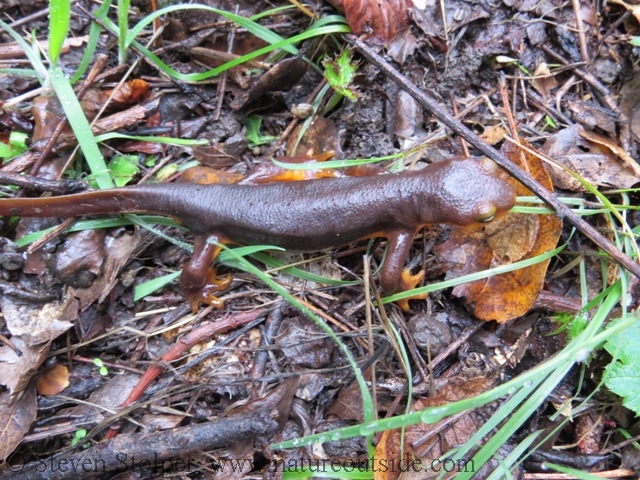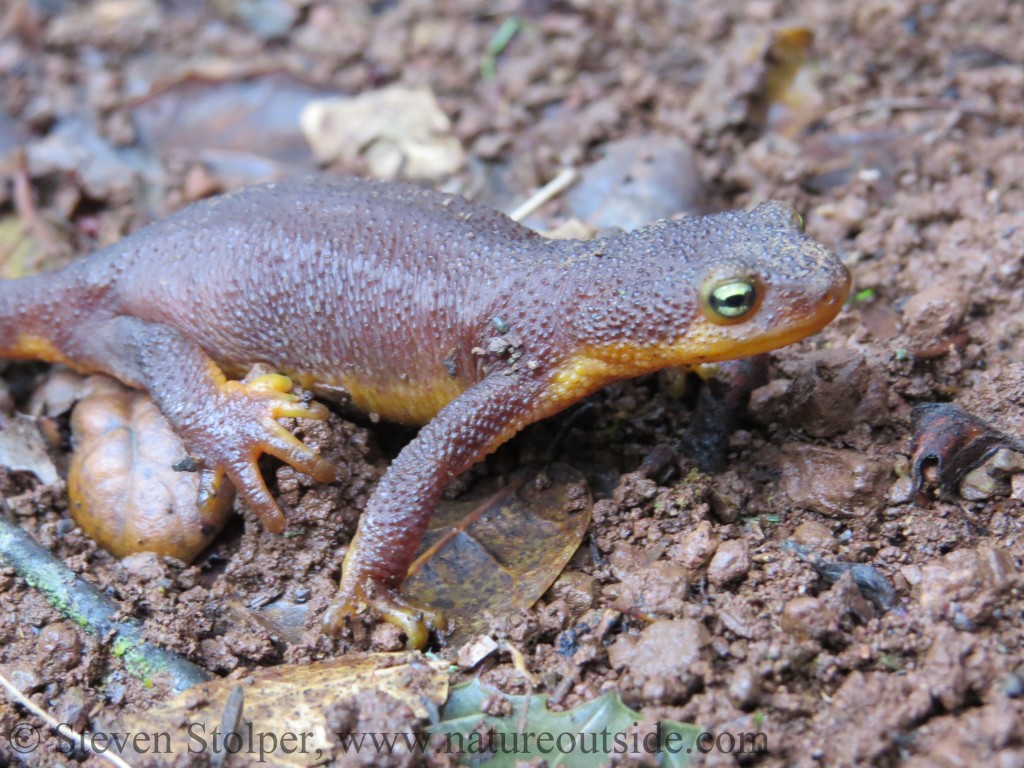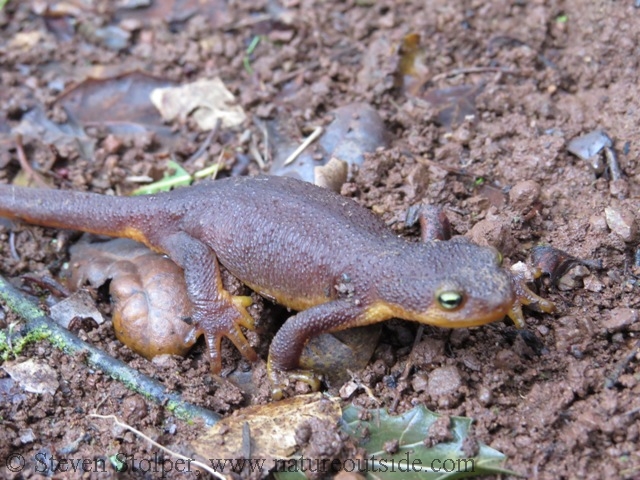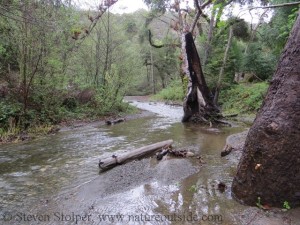The much-needed rain is an enormous benefit to the plant and animal life in Northern California. In particular, amphibians have been stressed greatly by the long dry spell. I welcome the cacophony of Chorus Frogs that now greet my evening strolls. It is a welcome reminder that the night is once again alive.
The rain came none too soon for the California Newt (Taricha torosa). The California Newt is a salamander 2 3/4 – 3 1/2 inches long. In their terrestrial phase, they are dark orange/brown above and bright orange below. Many hundreds reproduce in a seasonal pond by one of my favorite hiking trails.
Newts breathe through lungs. They are diurnal and I often see them crawling over the floor of wet forested areas. They eat small invertebrates such as worms, snails, slugs and insects.
They become aquatic to breed. Breeding season occurs sometime between December and February. During this time, I regularly see them moving in large numbers from their moist forest lairs to the nearby seasonal pond.
The newts are orange for a reason. The color serves as a warning to potential predators. Their skin secretes tetrodotoxin, the same deadly neurotoxin found in pufferfish. The toxin is present throughout the newt’s body and can cause death if eaten in quantity. Exercise care handling newts. The poison can be absorbed into the body through cuts in the skin and through mucus membranes. Few animals eat the newt because of this. The exception is the Gartersnake, which is resistant to the poison.
Here are some pictures of California Newts I saw while hiking today. I identified them as California Newts, and not Rough Skinned Newts, because the eyes protrude to the edge of the body when viewed from above. In addition the lower eyelid is light colored and not dark.

The California Newt blends into its environment. Notice the protruding eyes.

California Newt – notice the eyes!

California Newt on the move
Share your thoughts
Have you seen these creatures? What have you noticed about them? Where do you find them? Have you seen them in their aquatic phase?



Happy 2024 New Year, Steve. I always enjoy reading your newsletter and am excited to see that you have several new hikes/destinations on the horizon.
We often see newts on our Wednesday weekly hike during the rainy season. None yet so far this year, but I’m sure they are there. I did not realize they were toxic. Good to know.
Happy New Year, Ardis! I’m glad to hear you are out hiking. Have a happy Newt Year! 🙂